The most abundant element on Earth does a whole lot of good. Except when there’s too much of it and it’s in the wrong place. So how do we solve a problem like nitrogen?
There was a time when this Canadian was forced by her high school chemistry teacher to memorize the entire periodic table of elements. Nitrogen was easy. It came early, at No. 7. It was the most abundant element on Earth, our teacher told us, crucial to life, found in soils and plants, in our water, in our air. And, some classmate snickered and said under his breath, in our pee.
At that point in the early 1980s, there was no U.N. International Nitrogen Management System to tackle the problem of global nitrogen pollution. That wouldn’t happen until December 2016. While a very few scientists began sounding the alarm about the impact of nitrogen on coastal water systems in the early 20th century, and the chorus grew in size and volume in the ’80s and ’90s, according to a scientific paper published in 2006, most scientists were debating whether phosphorus or carbon was the larger culprit. In the meantime, the world continued to blithely douse farmland with fertilizers made largely of nitrogen, and flush our urine, with its 10 percent nitrogen, into ponds and rivers and lakes and oceans.
Today, however, scientific consensus is that “nitrogen represents the largest pollution problem in the nation’s coastal waters, and one of the greatest threats to the ecological functioning of these ecosystems,” according to the journal Limnology and Oceanography. In the past half-century, we have increased the amount of nitrogen in the environment more than we have any other element. “Nitrogen in the right quantities, in the right proportions with other nutrients, is absolutely essential to life,” says Emma Green-Beach, a shellfish biologist and the executive director of the Martha’s Vineyard Shellfish Group. The problem, she says, isn’t nitrogen, it’s excess nitrogen.
Why is something so beneficial on land so harmful in the water?
Nitrogen, which makes your lawn verdant and your plants lush, similarly makes plants grow in the water. What makes this a problem, says Anne Giblin, senior scientist at the Marine Biological Laboratory in Woods Hole, is that many of the water-based plants that grow in the water are single-celled organisms, such as blue-green algae (cyanobacteria). These plants grow quickly, which can create algal blooms that turn the water green and scummy. They also die quickly, which creates a second problem.
When that algae dies and falls to the bottom of the pond or lake, it begins to decompose. Decomposition requires a lot of oxygen, but water, unlike air, contains very little. Consequently, says Giblin, it’s easy to use all that oxygen up: “So now you’ve taken all the oxygen out of the water, which, of course, is detrimental to the fish and all the other organisms living in the water.”
Nitrogen also tends to favor faster-growing plants such as sea lettuce (Ulva) and sea moss (Gracilaria) in the water, explains Giblin, which can shade the more beneficial plants, such as eelgrass. Consequently, you wind up replacing plants that create healthy habitat and a food source with plants that are less supportive of healthy marine life.
What’s more, she says, nitrogen moves through a number of transformations, from ammonium to nitrate to nitrous oxide, which is a greenhouse gas.
And finally, explains Emma Green-Beach, “around here, the acidic conditions that we’re experiencing — coastal acidification — are largely the result of excess nitrogen.” Among the concerns with acidification, she explains, is the impact it has on shellfish. “When the mud is acidic, the baby shellfish, which settle at the bottom of the ponds, literally dissolve,” she says, unable to assimilate calcium.
‘Nitrogen in the right quantities, in the right proportions with other nutrients, is absolutely essential to life,’ says Emma Green-Beach, a shellfish biologist and the executive director of the Martha’s Vineyard Shellfish Group. The problem, she says, isn’t nitrogen, it’s excess nitrogen.
It isn’t hard to actually see the impact of nitrogen pollution on the Vineyard, and there are plenty of laments about the state of various ponds that show signs of it. The Martha’s Vineyard Commission reports that “about 64 percent of the Vineyard’s land area is made up of watersheds that drain into nitrogen-sensitive coastal ponds, either through runoff or groundwater flow.” The commission points to three paths nitrogen takes: rain from polluted air; fertilizer from lawns, gardens and farms; and “by far the greatest source of manageable nitrogen pollution,” urine from wastewater. The Title 5 septic systems that serve about 90 percent of Vineyard homes were designed to tackle pathogens in wastewater, and, says Anne Giblin, “they do that very well.” But nitrogen, she says, goes through the system because it gets converted by bacteria into, first, ammonia, and then nitrate, which is a very mobile compound in the soil: “It doesn’t stick to clays. It just travels through with the water.”
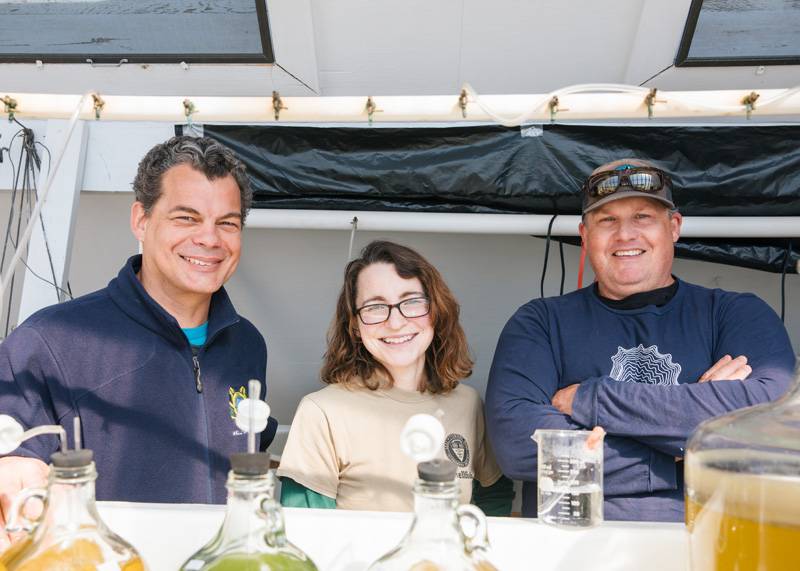
What are we doing about it?
Experts agree that there isn’t a silver bullet solution, but rather a panoply of them to address the problem of nitrogen pollution:
Anna Edey’s DIY wood-chip system on the Vineyard
Vineyard Haven resident Anna Edey spent much of the 1960s with her young children in and around Sengekontacket Pond, enjoying “clean, sparkling” water teeming with “lots of life.” She returned with her grandchildren in the 1990s to discover a very changed place. “It was filthy,” she says. “It smelled horrible, there were masses of rotting algae on the beaches where we wanted to put our towels down, with swarms of flies.” She knew nitrogen from septic systems were a key part of the problem so she set to work creating an alternative to the required Title 5 systems. “Title 5 was designed to protect against pathogens and they do that very well,” says Marine Biological Laboratory’s Anne Giblin. “They weren’t designed for nitrogen removal. So that’s the problem.”
Anna Edey agrees. “What I discovered,” Edey says, “is that when I filter the wastewater through wood chips, more than 95 percent of the nitrogen is soaked up. It never gets down to the groundwater. It’s a very simple system.”
It got complicated when it came time to secure permitting from the state Department of Environmental Protection (DEP). Homeowners and town boards of health and the DEP will likely be assessing the science over the coming years about woodchip filters, which, most experts agree, are an effective way of mitigating nitrogen.
Edey has since moved from her farm in West Tisbury to Vineyard Haven, and now has exactly the Title 5 system she so reviles though she has every intention of installing a woodchip system there.
I/A technology to address issues with Title 5 septic systems
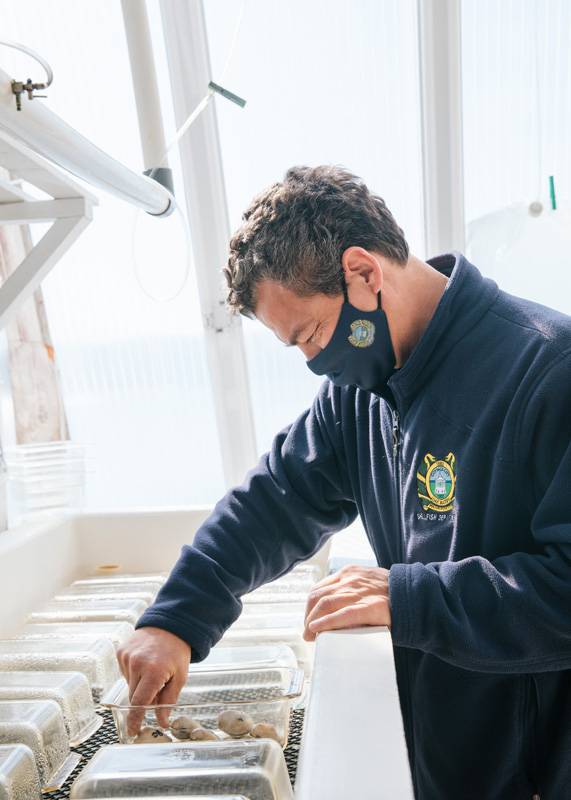
Just as Anna Edey was inspired to look at ways to restore the health of the pond she loved, it was the degeneration of another beloved body of water that alerted Melinda Loberg to the problem of nitrogen pollution. Her family owned a “shack” on Lake Tashmoo — “it’s another world,” she says — and she spent her summers playing in and around the water. “There were scallops, there were blue crabs, there were starfish. Mussels growing on the rocks, flounder, bass. It was a child’s playground.”
In the mid ’90s, Loberg returned and was aghast at the change in the lake she loved. She became involved in various groups to address nitrogen pollution. “I felt I had a stake in preserving the quality of our ponds for other generations,” she says.
She found inspiration in the successful cleanup of Vineyard Haven’s harbor, which was a result of the town replacing all downtown septic systems with sewers. When she retired to the Vineyard in 1999, she was elected selectman, and began looking at alternatives to sewering, which, though it worked at keeping pollutants out of bodies of water, was prohibitively expensive.
The Martha’s Vineyard Commission reports that ‘about 64 percent of the Vineyard’s land area is made up of watersheds that drain into nitrogen-sensitive coastal ponds, either through runoff or groundwater flow.’
She met John Smith at a conference. Smith was planning on retiring to his place in Edgartown when he became aware of the impact nitrogen was having on the ponds. He teamed up with the town of Tisbury in a pilot project to install NitROE wastewater treatment systems to existing Title 5 septics in the Lagoon Pond and Lake Tashmoo watershed, a process that promised to effectively remove nitrogen to levels as low as those achieved by a wastewater treatment plant.
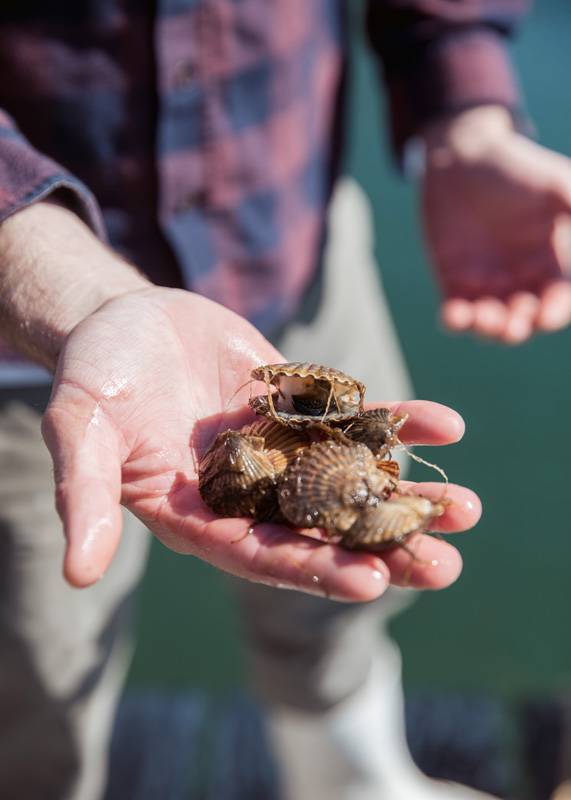
“Over the course of a year and a half, [this system] was refined to the point where we could achieve much lower nitrogen output than had been achieved by any other technology,” says Loberg. The next stage was to expand the testing group to 50 systems, “typically a three-year process,” she says.
Once that’s achieved, and assuming that results continue to show at least a 50 percent reduction in nitrogen from the typical 19 ppm (parts per million) of a standard septic, the NitROE system will be able to proceed with less government oversight since, as Smith explained in an interview with The MV Times, it will be a proven technology.
Not all Islanders concerned about nitrogen pollution are convinced, though, that these systems, which can add $15,000 to the cost of a Title 5 system, make enough of a difference.
But NitROE tanks aren’t the only option. Anna Edey’s wood-chip system makes an appearance here in the form of what’s referred to as a “layer cake” approach. The leach area is layered with sand and wood chips. As Edey knows, wood chips are a highly effective component of denitrification. A pilot program on the Cape resulted in a 72 percent nitrogen removal average, with some systems removing more than 90 percent. A huge benefit of the layer cake system is that it’s not proprietary, making it relatively simple. Cost has been pegged at approximately $1,500.
Doug Cooper, an environmental consultant and registered sanitarian, is something of a skeptic toward septic mitigation efforts. “With anything in the natural world, there’s a whole host of factors in the formula as to how nitrogen gets to coastal abatements and what its impact might be. Some people think if you put every septic system into a town sewer line, it’ll clean up the ponds. And there are some who are a little more agnostic, who say we can put everybody with septic systems on an advanced treatment system and it may not change the aquatic chemistry in some of these coastal abatements. And that’s the dilemma.”
Emma Green-Beach, however, says it’s widely accepted that septic systems are the primary culprit, and that starting there makes sense and is likely to produce positive results. “There have been groundwater studies that show this,” she says, pointing also to the successful cleanup of Edgartown Great Pond, thanks to the tertiary wastewater treatment that Edgartown upgraded to in the mid-’90s. Tertiary treatment, which is expensive and therefore not standard in most cities and towns, removes nitrogen. “Lo and behold,” says Green-Beach, “20 years later, Edgartown Great Pond is doing quite well.”
Martha’s Vineyard Shellfish Group
Along with the group’s eelgrass project, the M.V. Shellfish Group has been active since 2011 collecting shells — oysters, clams, mussels — from Island restaurants and returning them to the Tisbury and Edgartown Great Ponds, a project sponsored by the Martha’s Vineyard Vision Fellowship. Given that acidification is one of the consequences of nitrogen in the ponds, the shells, which are made of calcium carbonate, “act like Tums,” says Emma Green-Beach. Green-Beach and many of the efforts of the M.V. Shellfish Group have been supported by the Martha’s Vineyard Vision Fellowship: “[The shells] raise the pH, they release calcium back into the water, which the shellfish need, and then the shells themselves act as substrate for the oysters to settle onto.” What’s more, she says, the project keeps the shells out of the trash and gets them back into the Great Pond ecosystem.
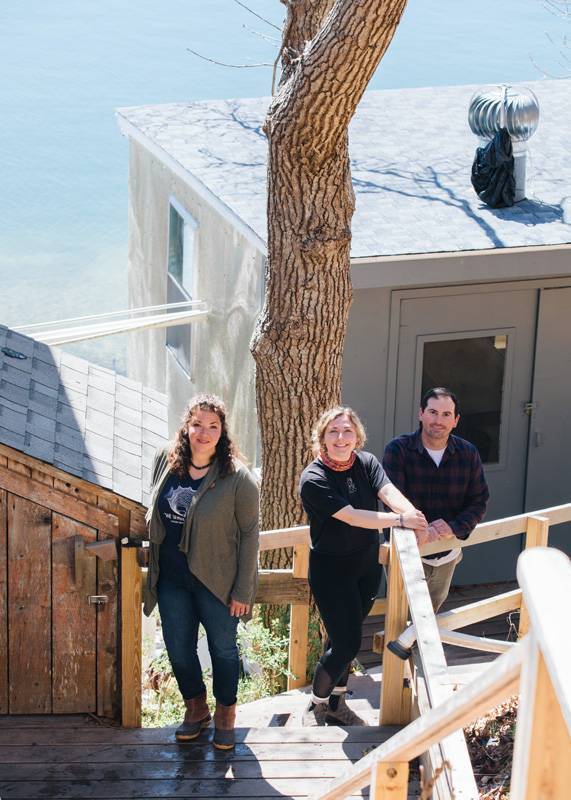
The group also grows “tens of millions of baby shellfish,” says Green-Beach, which are returned to the ponds. These shellfish eat the phytoplankton, which have absorbed some of the nitrogen in the ponds, and that then becomes the shellfish tissue. “When we harvest and eat those shellfish, we’re taking nitrogen out of the ponds.”
The shellfish themselves are nitrogen fighters in a number of ways, explains Green-Beach. They improve water quality by filtering it, absorbing tiny critters as food and using nitrogen and phosphorus in their shells and tissue. The cleaner water allows sunlight to better penetrate the water column, boosting growth of submerged aquatic vegetation — which in turn provides habitat and sequesters nutrients. They eat phytoplankton, which have absorbed nitrogen; and when shellfish poop, their waste is buried in the sediment, where bacteria turns it into dinitrogen gas, which is benign in the atmosphere.
And finally, Green-Beach points to the group’s phragmite harvesting project. Phragmite is an invasive species that spreads easily and crowds out native species. It’s also effective at taking up and storing nitrogen. With a grant from the EPA, the group has been harvesting the phragmite, essentially sequestering nitrogen.
Permeable reactive barrier near Lagoon Pond
A denitrification strategy still in its infancy, the permeable reactive barrier (PRB) recently installed on private land near the Martha’s Vineyard Museum involved drilling 30 feet into the ground to install pipes that inject wells nearby with a mixture of vegetable oil emulsion and water. The emulsion sticks to soil, and works by reducing the amount of oxygen, which then tricks the bacteria into feeding on its second favorite thing, nitrogen — which is then released into the atmosphere as a gas.
The M.V. Shellfish Group has been active since 2011 collecting shells — oysters, clams, mussels — from Island restaurants and returning them to the Tisbury and Edgartown Great Ponds … Given that acidification is one of the consequences of nitrogen in the ponds, the shells, which are made of calcium carbonate, ‘act like Tums,’ says Emma Green-Beach.
PRBs are a bit of a gamble, but when they do work, they generally work very well, says Emma Green-Beach. The problem, she says, is that they’re not always sited properly: “I know that the M.V. Commission took a really long time to do the very fine-scale micro-siting for that … so I’m definitely optimistic.”
Inlet opening
It’s pretty straightforward: The ponds rise thanks to increased groundwater and rainfall, both of which also increase nutrients (i.e., nitrogen) in the ponds. The water temperature rises, there’s more chlorophyll, more algae. The solution is just as straightforward: Dredge a path from the ocean to bring more water in and flush the ponds. “You want a good flush for five to seven days,” says Sheri Caseau, water resource planner with the M.V. Commission. The flushes, which occur around three or four times each year, are organized to ensure that the various species reliant upon the pond habitat aren’t disturbed or negatively impacted. Late August tends to be the most crucial time to address excess nitrogen.
Fertilizer regulations
Yes, fertilizer is a significant contributor to nitrogen in waterways around the world, but thanks to Island-wide lawn fertilizer regulations, impact has largely been mitigated on the Vineyard. The regulations dictate when, how much, and where fertilizer can be applied.
Urine diversion on the Cape and in Vermont
For those on the Cape who’ve been wrestling with the issue of nitrogen pollution and algae blooms, Earle Barnhart and Hilde Maingay are mainstays. Pioneers of urine diversion toilets, Barnhart and Maingay learned in 2005 that Falmouth was planning to spend $900 million on sewers over roughly the next half-century. They teamed up with State Representative Matt Patrick, who urged the town to adopt urine diversion systems as a much cheaper way to address the nitrogen pollution that was ravaging the Cape ponds. Barnhart and Maingay operated the nonprofit Green Center. Their Eco-Toilet Summits highlighted current technology and best practices. “We calculated that the cheapest and best solution to the Cape’s wastewater nitrogen problem was for 50 percent of the population — primarily the men — to adopt urine-diverting urinals,” explains Barnhart. “That alone would completely solve the nitrogen problems in many of the Cape’s towns that were otherwise planning several billion dollars in sewers.”
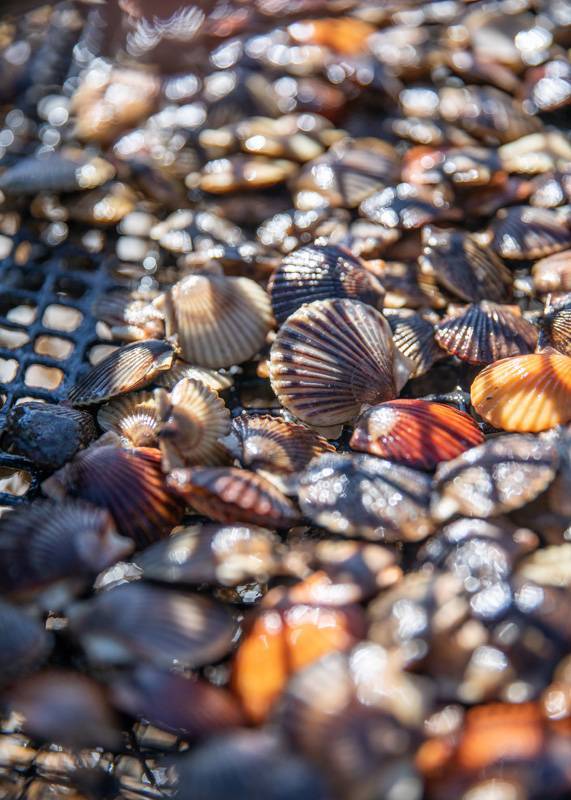
Eventually, the town ran a two-year program testing roughly a dozen eco-toilets. The conclusion was clear. Urine-diverting toilets were extremely effective at reducing nitrogen in the Cape’s groundwater. Urine contains most of the nitrogen and phosphorus in human waste. By diverting it into a separate holding tank, where it’s stored for pickup and potential use as fertilizer, it’s kept out of the groundwater and, therefore, the bodies of water. What’s more, eco-toilets dramatically reduce the amount of water required for flushing, require little energy, and eliminate the costs and disruption of infrastructure associated with sewer systems.
Ultimately, though the project itself did what it intended — showed that the use of eco-toilets could remedy much of the pollution problems on the Cape and could also work on the Vineyard — as a report later noted, “Very few Falmouth homeowners agreed to participate in the program.”
This finding doesn’t surprise Bradley Kennedy, research associate at the Rich Earth Institute in Battleboro, Vt., which Barnhart and Maingay set up to continue their research.
“I think the biggest hurdle is just people’s awareness that it’s an option,” says Kennedy. “And people’s resistance to trying new things or just being uncomfortable with something unfamiliar. Most people when they try it just say, Oh, that was pretty normal. Not a big deal.”
A good entry point, she says, would be for people to install urinals, which already separate out urine from solid waste, though plumbing would have to send the urine to a separate holding tank where it can be removed. At the Rich Earth Institute, they have a lineup of farmers eager for the urine, which they use as fertilizer.
But, she admits, it’s a tough sell, and there are regulatory barriers too. But, she says, “If you’re willing to think outside the box, you can make it happen.” (Want to try it? You can read more about the process on the Rich Earth Institute site).
So now what?
While all these efforts are to be lauded, Doug Cooper points to things that get in the way, including the impact of waterfowl and their nitrogen-saturated poop.
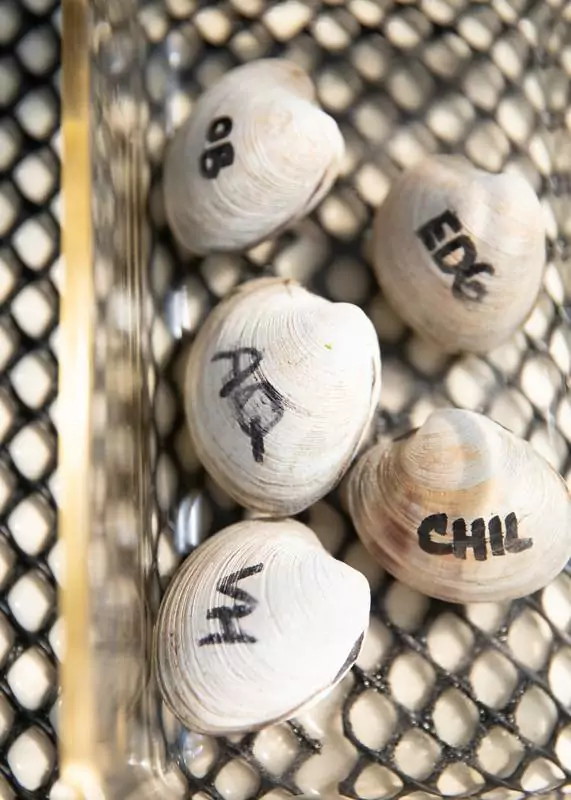
“I have heard scientists say the contribution by waterfowl, especially with the climate warmer, we have geese and ducks and cormorants overwintering here, where in the old days things would freeze up and these birds would go South,” says Cooper. “There’s probably a larger contribution than ever before just from waterfowl.”
“We can do an awful lot managing wastewater and septic systems, and at the end of the day may not get the full value of water quality improvement in the estuaries,” he says. “That’s my own guess, but I might be wrong.”
Green-Beach, for one, thinks he is. “We’re not going to see it right away, because the groundwater takes a while to travel through the sediment into the pond,” she says. “So we might not see benefits for 15 to 20 years.” But, she feels confident, they’re coming.
Sheri Caseau with the commission believes the efforts “show a lot of promise.” She hopes each of us will do what we can: Eschew fertilizer, update our septic systems, support the work being done by others. She points to the Cape’s severely polluted ponds as a cautionary tale if we don’t continue to fight hard for our coastal waters. “We can still save them,” she says. “We’re not to the point we can’t recover.”

